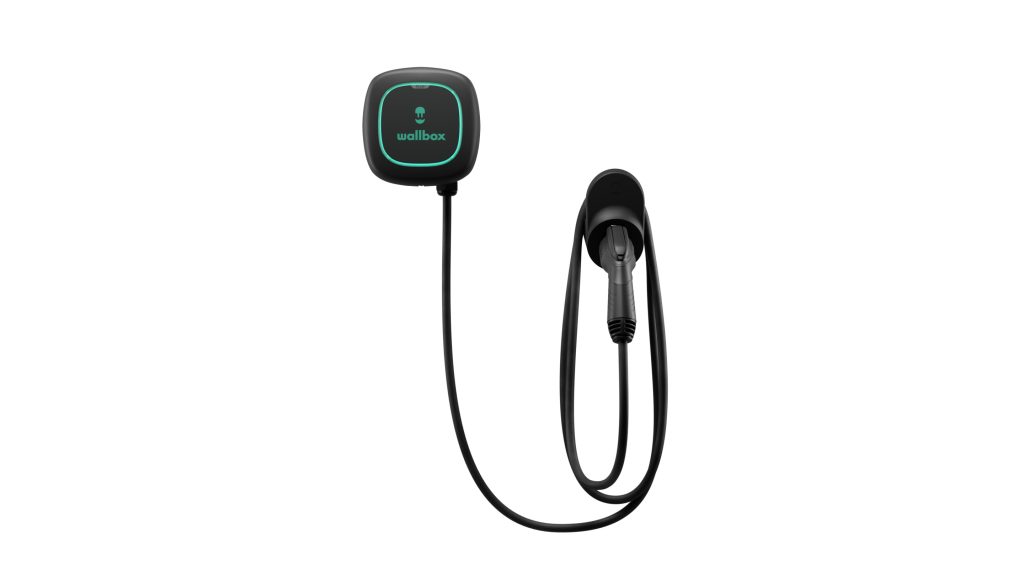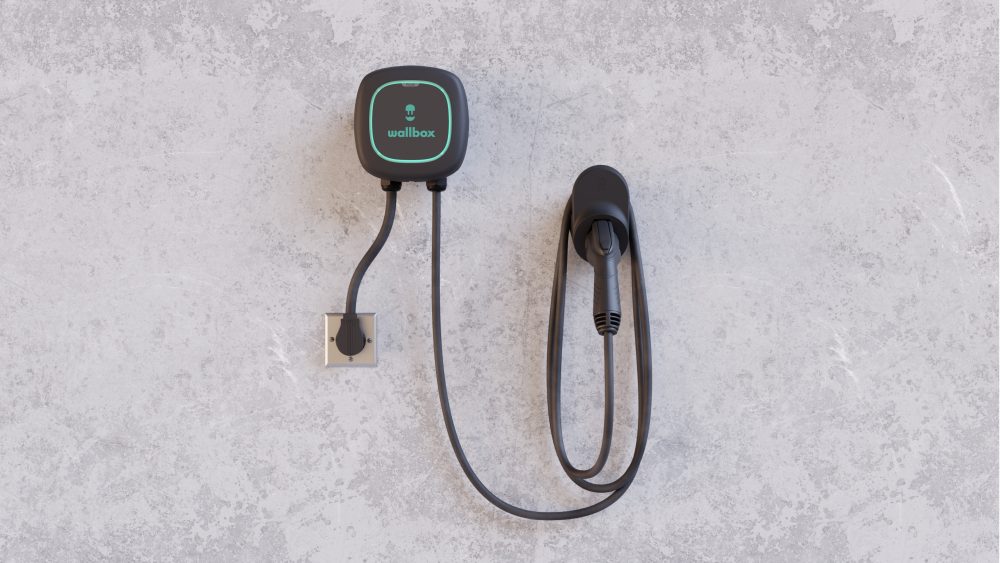Like everything else, with electric vehicles, there’s good news and there’s bad news. The good news is that the market is growing rapidly. According to the latest research from Parks Associates, 5 percent of U.S. households now own an electric vehicle (EV) and almost 20 percent claim they are considering purchasing an EV in the next 12 months.
The bad news? There still aren’t many public charging stations across the country. Consider that there are only about 50,000 EV charging locations vs. 150,000 gas stations nationwide–and there are many, many more pumps at those gas stations. So while we wait for the infrastructure bill to do its stuff, what’s the solution?
Get a home EV charger. They have come down substantially in price, can be easy to install in modern houses, and deliver a level of convenience that’s like having your own private gas station.
There’s a growing array of home EV chargers now available, such as the $649 Enel X JuiceBox 40 and Electrify America’s $649 HomeStation. These models all conform to the defacto plug standard for EVs in the U.S. known as a J1772 port. Tesla is the only outlier, and it uses its own plug standard, so its cars can only charge at Tesla-branded Tesla stations and other EVs cannot charge at Tesla stations—unless you use an adapter, which can cost $150. However, a recent agreement with the Federal government will make 7,500 Tesla charging stations available to other EVs by the end of 2024.
Home EV chargers usually include a smartphone app to remotely schedule charges, select off-peak hours for cheaper charging, cool or warm the car before you get in, and alert you when it’s fully charged. We recently unboxed the $699 Wallbox Pulsar Plus EV Charger.

The Wallbox Pulsar Plus is a Level 2 charging station that can bring a vehicle from near zero to 100 capacity in about 7 hours. (So-called Level 1 charging means using an adapter to plug into a standard 110-volt home outlet, but it takes hours to put just 2 or 3 miles of range into a car this way.) Level 2 chargers can be easy to install, depending on the existing wiring in your home. Most chargers are smaller than a breadbox and plug into a 240-volt, four-pronged plug known as a NEMA (National Electrical Manufacturers Association) 14-50. Newer homes already have NEMA 14-50 outlets (usually in the basement) for electric stoves. If you don’t already have a 14-50 plug near the circuit box in your garage, it costs about $200 to $1,000 to have one professionally installed. Opting for a plug-in charger rather than having it hardwired means you can take the charger with you if you move.
The Wallbox package includes the Pulsar Plus EV Charger, the mounting hardware, and an accessory holster for hanging up the cable and plug. Once you unbox the Wallbox Pulsar Plus, the first thing you’ll discover is a QR code inside for downloading the Wallbox app. The app works with Amazon Alexa and Google Assistant, so you can trigger it via voice command if you are so inclined. The Wallbox app can be used to manage charging, monitor the status of your EV remotely from anywhere, set and change charging schedules, and remotely lock or unlock the charging station (so no one can hijack your power). If you’ve got more than one EV, the app can manage multiple users, along with real-time notifications and statistics.
The squarish 6.5 by 6.5-inch Pulsar Plus is more compact than some, and it is about half the size of the Juicebox 40 model, for example. However, Wallbox separates the holster to hang the coiled charging cable from the main unit (most models permanently fix the holster to the charger). This means the Wallbox model offers some flexibility in placement, depending on where the studs are in your garage and exactly where you’ll park your EV. However, the screws for the holster have to be manually screwed in because a power drill won’t fit into the narrow opening where the placement screws go; a minor installation hassle.

As with many products that rely on a wireless software installation process, the Bluetooth pairing routine between our Android phone and the Pulsar Plus wasn’t trouble-free. Initially, the phone indicated it was paired but the app refused to cooperate. A phone reboot solved the problem and the subsequent Wi-Fi connection (which allows for the remote control features) was straightforward.
The Wallbox can also accommodate over-the-air updates, so you’ll find it recognizes all the latest EVs. Everything is also managed by the app. There’s no LCD screen on the charger, just a ring of LEDs that display different colors to indicate whether it’s connected to the network, charging, or finished charging.
Overall, the Wallbox Pulsar Plus was easy to operate and install. All of this was facilitated by the fact that we already had gone to the trouble of installing a NEMA 14-50 outlet in the garage. Consumers who don’t have such an outlet at the ready will have to seek the assistance of a certified electrician.
The last piece of bad news is that driving ranges are still limited on EVs. Cold weather and hills can deplete a battery faster than driving in warm weather across the prairies. And because it takes more time and does more stress to these batteries to fill up the first 10 percent and last 20 percent of capacity, if you’re on a long trip, your EV will probably suggest stopping to charge before dropping below 15 percent of power, and then it will recommend you only charge up to 80 percent of capacity. So to top up your EV to 100 percent is usually best done at home, overnight.
Could home charging be the future? Some automakers and industry analysts believe that’s the case, especially as battery ranges increase and car companies offer features like those available with the Ford F-150 Lightning pickup truck, which can be used to keep the lights on at home during a blackout. With an optional package called Ford Intelligent Backup Power, the truck can essentially reverse the flow of electricity and instead of charging at home, it can send power to your house from its battery. A fully charged F-150 could power the average U.S. home for about 3 days, essentially replacing the need for a separate backup generator. The F-150 Lightning option costs $3,895 and requires a professional installation.
In the future, more EVs are expected to offer similar options including so-called bidirectional systems that can feed power back into the grid during brownouts. When that becomes a common feature, charging at home will be an even bigger draw.
Spec Box:
Wallbox Pulsar Plus EV Charger
MSRP: $699
Connector type: Type 1 J1772
Maximum current: Level 2, 48Amps (11.5kW)















